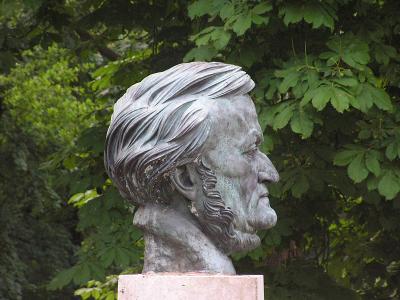Wagner's Most Famous Music: Where to Start
Richard Wagner is one of the most well known and highly regarded German composers of all time. Known for his revolutionary compositions and Wagnerian leitmotif, he was responsible for some of the most recognisable opera music ever written.
Let’s take a deep dive into some of his most famous opera songs.
Ride of the Valkyries - Die Walküre
Video
‘Ride of the Valkyries’ is not only one of Wagner’s most recognisable pieces of music, but one of the most popular opera songs in the whole canon. Due to being featured in a plethora of films and TV shows, including Apocalypse Now and Star Wars, it’s a favourite amongst film buffs and opera goers alike.
Found in the beginning of Act 3 of Die Walküre (The Valkyrie) – the second of the four operas in Wagner’s Ring Cycle – Wagner’s epic score accompanies a powerful scene where the Valkyries carry fallen soldiers to rest in Valhalla.
First composed in 1851, a few years before Wagner’s whole Ring Cycle was complete, The Valkyrie remains just as important to modern audiences as it did to Wagner’s.
The Bridal Chorus - Lohengrin
Video
The ‘Bridal Chorus’ is instantly recognisable to anyone in the Western world who has been to a wedding ceremony.
In 1858, the Princess Royal and Prince Frederick William of Prussia featured Wagner’s composition at their royal wedding. Since then, it has been used by brides across the globe as the beautiful background music that they walk down the aisle to.
However, in Wagner’s romantic opera Lohengrin, from which the ‘Bridal Chorus’ is taken, the wedding party sing the tune after the ceremony – not during like in today’s society – as the chorus accompany the newly wed Elsa back to her Bridal Chamber.
Morgenlich leuchtend - Die Meistersinger von Nürnberg
Video
The Mastersingers of Nuremberg was Wagner’s only comedic opera. To this day, it is one of his most commonly staged operas, even though it has one of the longest duration times – nearly four and half hours.
Set in Nuremberg in the mid-16th century, the plot centres around a master craftsmen to reflect the resurgence of the Renaissance in the 19th century. Wagner’s masterful aria, ‘Morgenlich leuchtend’ is found in Act 3, Scene 2 of the opera. Known in English as “Walter’s Prize Song”, the aria works on two levels because the tenor is not only singing to the audience, but the character Walter is singing in a competition.
With timeless themes of love and romance, it’s no wonder that Walter’s Song has won the hearts of audiences across the generations.
Dich, teure Halle, grüß’ ich wieder - Tannhäuser
Video
The full English title of Wagner’s popular 1845 opera is Tannhäuser and the Minnesingers’ Contest at Wartburg. Typical to Wagner’s style, this opera has roots in mythology, including the character Venus and her fictional realm Venusberg. However, it’s mixed with historical truths from the 14th century, taking influence from the German song writing tradition, Minnesang.
The popular aria ‘Dich, teure Halle’ is taken from Act 2. Sometimes referred to as the ‘Hall Aria’ due to taking place in the Hall of Song, it’s a powerful depiction of mixed emotions. Elizabeth is overwhelmed with joy when she hears that her love, Tannhäuser, will be coming to the hall. However, when he starts to leave again the mood of the music changes to a much darker melody, before ending with the same happiness she felt at the beginning.
Written for a soprano voice, this song has had many famous variations over the years, with lyrical sopranos to dramatic sopranos all having their own take on how Wagner’s dramatic piece should sound.
Liebesnacht - Tristan und Isolde
Video
Tristan and Isolde is another one of Wagner’s operas that has stood the test of time. Not only loved by audiences, but also admired by fellow composers, it has had a lasting influence on Wagner’s predecessors, Richard Strauss, Alban Berg and Benjamin Britten.
‘Liebesnacht’ from Act 2, is one of the most beloved pieces from the opera. Also known as the ‘love duet’, it’s a tender moment between the two title characters, Tristan and Isolde. Their adulterous affair calls for them to meet in the night, and the romantic aria represents a brief moment in time where they can embrace their love for one another without the judgment of the wider world. Although, their rendezvous is cut short by cruel reality when a not so pleased King Mark stumbles upon them.
Wagner was famous for his musical innovations and new stylings, and none more so than the ‘Tristan Chord’. Found in the opening bars of the prelude, the Tristan Chord sets us up for one of the most revolutionary scores ever attempted, which changed the course of opera music forever.


